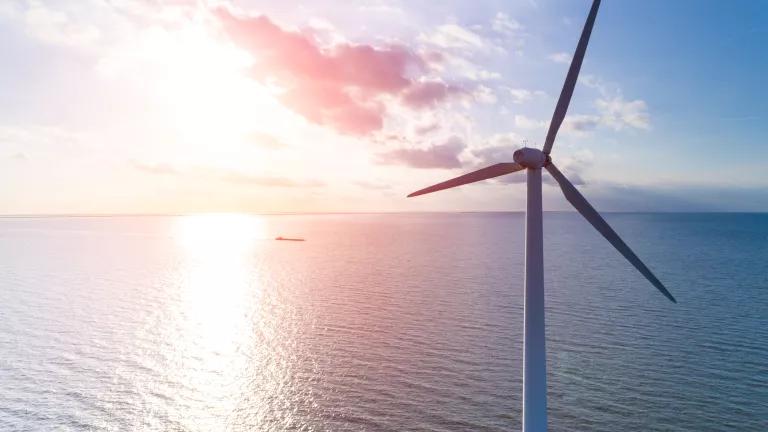Monitoring Priorities for Offshore Wind
A group of more than 20 environmental organizations developed a guide for environmental monitoring that will be crucial to advancing offshore wind responsibly.

A robust scientific research and monitoring plan is a crucial component of responsible offshore wind development
A group of more than 20 environmental organizations developed a concise guide to the science-based principles and priorities for environmental monitoring that are crucial to advance responsible offshore wind development in the United States.
Offshore wind energy will play a key role in the critical transition away from harmful fossil fuels to a clean energy economy. Offshore wind can help address climate change, reduce local and regional air and water pollution, and grow a new industry that will support thousands of well-paying jobs. While the need for this transition is becoming only more urgent, for the full potential of offshore wind to be realized, we can and must ensure that all offshore wind in the United States is developed in a way that minimizes impacts on our vulnerable marine ecosystems.
A robust scientific research and monitoring plan should detect both interactions between marine habitats, wildlife, and offshore wind energy infrastructure and development activities, as well as broader ecosystem-level effects. This will help us learn as we go. Monitoring at each stage of offshore wind development, including planning and siting, during development activities, and throughout the lifetime of offshore wind energy project operations, can help support smarter siting, best management practices, and the selection of risk-reduction technologies. By incorporating new information learned from monitoring continually into the development process we can ensure that any identified risks can be proactively addressed at existing and future projects.
The new guide, which NRDC helped develop, offers two levels of recommendations:
First, monitoring priorities common to all geographic regions are identified, ranging from ecosystem-level questions such as changes in hydrodynamics and underwater noise levels, to species or habitat specific questions such as changes in the distribution or behavior of marine mammals, to questions related to specific potential impact factors such as the effects of electromagnetic fields on sensitive species.
Every geography, however, will have a unique set of priorities and considerations that are not necessarily transferable across regions. To bridge this gap, the document also presents considerations and monitoring recommendations specific to individual regions. Due to offshore wind energy advancing at different stages and rates in different regions, priorities are being developed through a similarly phased process. Monitoring priorities for the Gulf of Maine and the area off southern New England are already included, and additional regions will be incorporated as they are finalized in the coming months. The guidance document will also be periodically updated to reflect the latest scientific and technological advancements.

Understanding how marine mammals interact with offshore wind infrastructure is one of the monitoring priorities identified in the new guidance document
Achieving the necessary research and monitoring to support the responsible development of offshore wind is an all-hands-on deck exercise. A number of other groups are developing and compiling recommendations, including the Regional Wildlife Science Collaborative for Offshore Wind (RWSC). RWSC, a joint effort of federal and state representatives, developers, and environmental groups, was established in July 2021 to support the design of research and monitoring plans for wildlife and offshore wind energy along the Atlantic coast. Conversations with stakeholders led by federal agencies and state agencies are also actively underway. Offshore wind developers are also directly funding research and monitoring-related efforts. The recommendations set forth in the new guidance document will help inform this collective work.




